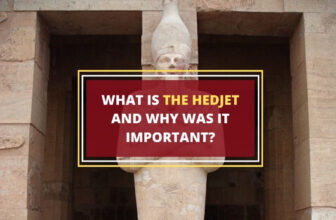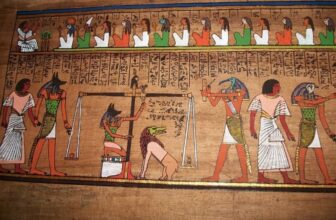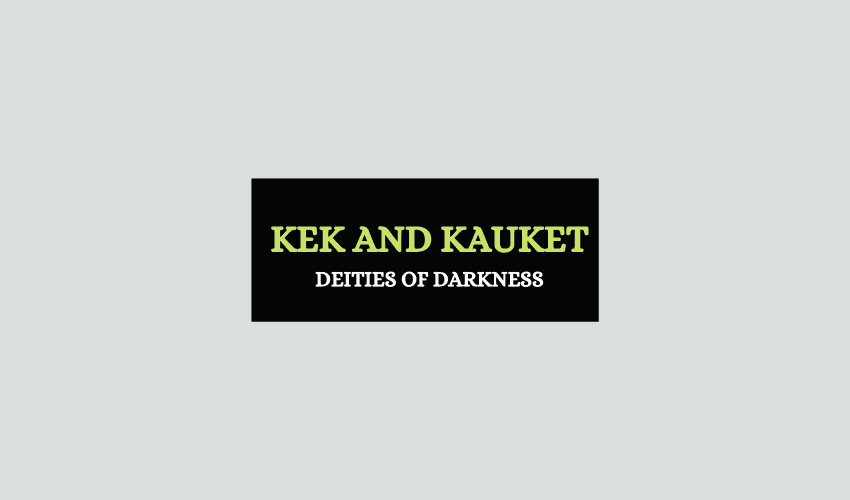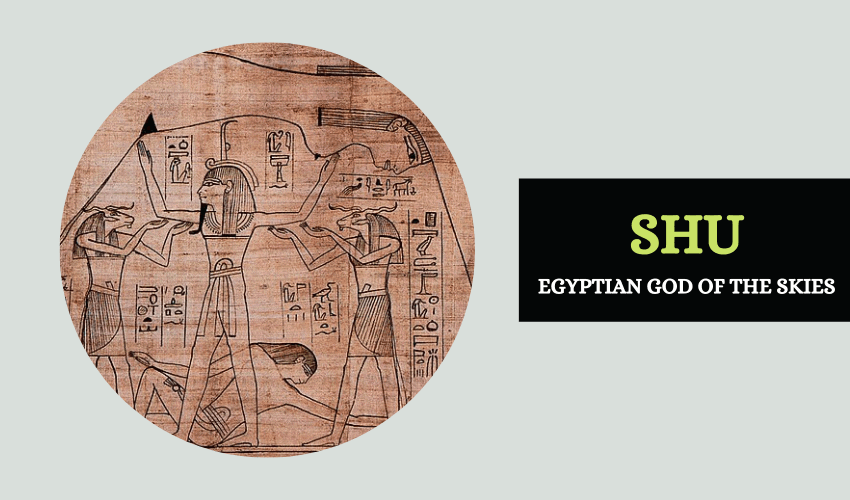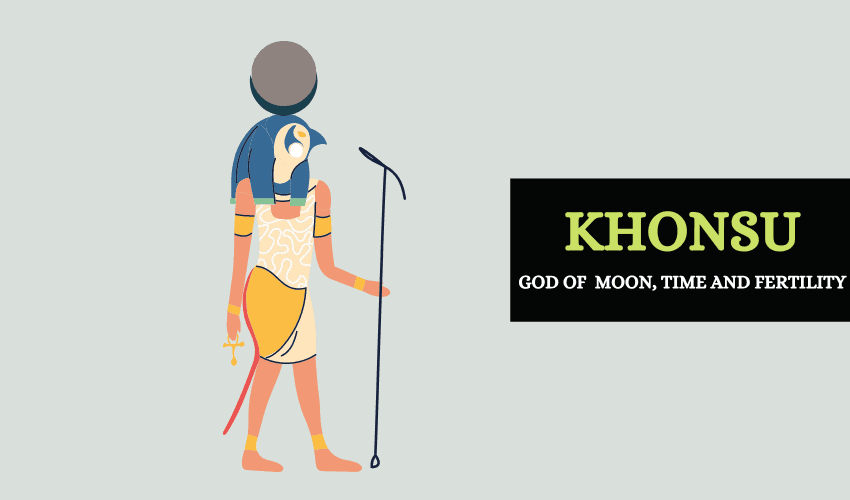
Table of Contents
Khonsu, also known as Chons, Khonshu, and Khensu, is an ancient Egyptian lunar good, representing the Moon, time, and fertility.
As a moon deity and the main light in the darkness, he was believed to look after night travelers and was often invoked to aid with healing, increase virility, and protect against wild animals.
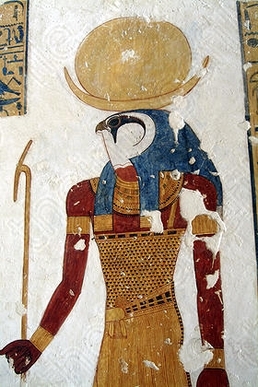
Khonsu’s Many Names
The name Khonsu comes from the word khenes, which means to travel or to cross, and it refers to the moon god’s travel across the night sky.
In Thebes, he was known as Khonsu-nefer-hotep, meaning the lord of Ma’at – truth, justice, harmony, and balance. During the new moon phase, he was called the mighty bull, and when the Moon was full, he was connected with the neutered bull.
One form of Khonsu was Khensu-pa-khart or Khonsu-pa-khered, which means Khonsu the child, and was believed to be the manifestation of the crescent moon, bringing the light each month and symbolizing reproduction and regeneration.
Some other names for Khonsu include the Wanderer, the Traveler, the Defender, the Embracer, and the Chronographer.
What Did Khonsu Rule Over?
Besides ruling the Moon, it was believed that Khonsu ruled over the evil spirits and protected humanity from death, decay, and disease. He was also considered the god of fertility with the power to grow crops, plants, and fruits, and helped women to conceive as well as men’s virility.
Khonsu was also worshiped as a healing god. One myth even suggests that he was personally responsible for healing Ptolemy IV, the Egyptian pharaoh of Greek origin.
Khonsu and the Triad of Thebes
In the ancient Egyptian religion, priests would often separate their many gods into the groups of three family members, known as Triads. Khonsu became, during the New Kingdom, part of the Triad of Thebes, together with the goddess of the sky Mut, who was his mother, and the god of air Amun, his father. Throughout Egypt, there were many shrines and temples that celebrated the Triad of Thebes. However, their cult had a center in the city of Karnak, which was the part of the ancient city of Luxor or Thebes, where their colossal temple complex was located. It was called The Great Temple of Khonsu.
Khonsu and the Cannibal Hymn
But Khonsu did not start as a benevolent, protective god. During the Old Kingdom, Khonsu was considered a more violent and dangerous deity. In the Pyramid Texts, he appears as a part of The Cannibal Hymn, where he is described as a blood-thirsty god who helps the dead king capture and devour other gods.
Khonsu’s Association with Other Deities
Some myths claim that Khonsu was Thoth‘s companion, another Egyptian deity associated with the measurement of time as well as the Moon. Khonsu was sometimes referred to as The Chronographer or The Divider of the Months because the Egyptians based their calendar on the Moon’s regular cycles and divided the lunar year into twelve months.
During later periods, Khonsu was believed to be Osiris‘s son, and these two deities were called the two bulls, representing both the Moon and the Sun. Although in Thebes he was established as Amun and Mut’s child, at Kom Ombo, he was believed to be Hathor and Sobek’s son.
In the Temple of Sobek and Horus the Elder, two triads were worshiped – Hathor, Sobek, and Khonsu, and Horus the Elder, Tasenetnofret the Good Sister, and their son Panebtawy. Therefore, the temple was known by two names – those who worshiped Sobek called it House of the Crocodile while Horus‘s devotees called it Castle of the Falcon.
Khonsu and The Princess of Bekhten
This story took place during the rule of Ramses III. During the pharaoh’s visit to Nehern country, known today as Western Syria, chiefs from all over the country came to pay him an annual tribute. While everybody presented him with valuable gifts, such as gold, precious wood, and lapis-lazuli, the prince of Bekhten presented his beautiful eldest daughter. The pharaoh took her as a wife and named her Ra-neferu, the primary royal wife and the queen of Egypt.
Fifteen years later, the prince visited the pharaoh in Thebes. He presented him with gifts and told him that the queen’s younger sister was severely ill. Immediately, the pharaoh summoned the most skilled physician and sent him to Bekhten to heal the girl. However, after examining her, the doctor realized he could not do anything because the poor girl’s condition was the result of an evil spirit. So, the pharaoh implored the god Khonsu to go and try to cure her.
The god filled a statue of his image with power and sent it from his temple to Bekhten. After confronting the evil spirit, the demon realized how powerful Khonsu was and left the girl’s body. The spirit asked for the god’s forgiveness and begged him to make a feast for both of them, promising to leave the world of the mortals after that. After the great feast, he kept his promise, and the girl was cured.
As a sign of gratitude and respect, the prince of Bekhten made a temple in Khonsu’s honor in his city. However, after three years spent there, Khonsu transformed into a golden hawk and flew back to Egypt. The prince sent many gifts and offerings to Egypt, all of which were placed at the feet of the Khonsu’s statue in his Great Temple at Karnak.
Khonsu’s Portrayal and Symbolism
Khonsu is most commonly depicted as a mummified young man with crossed arms. To emphasize his youthfulness, he usually has a long braid or sidelock as well as a curved beard, symbolizing his youth and royal power.
He would often carry crook and flail in his hands and wear a necklace with a crescent moon pendant. Sometimes, he would also hold a staff or scepter with the crook and flail. Being the moon god, he was often depicted with the moon disk symbol resting on his head. Apart from his mummy-like depictions, Khonsu would sometimes be portrayed as a man with the head of a falcon.
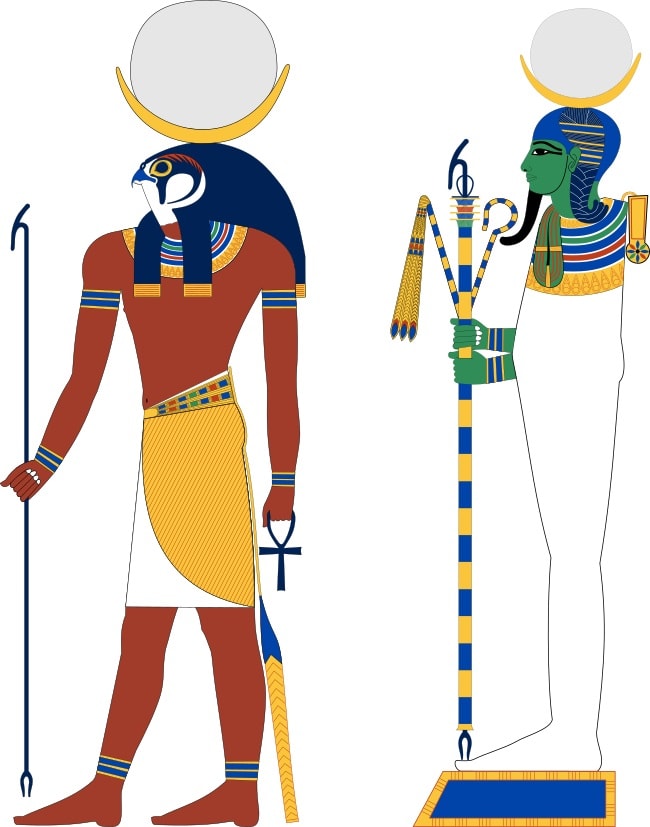
Each of these elements had a specific symbolic meaning:
Crook and Flail
In the ancient Egyptian civilization, the crook, which was called heka, and the flail, called nekhakha, were widespread and commonly used symbols. These were the emblems of pharaohs, symbolizing their power and authority.
The crook represented a shepherd’s staff keeping the cattle safe. In this context, the crook symbolizes the pharaoh’s role as the protector of his people. The flail is a whip-like rod with three braids hanging from its top. It was used for punishment and to establish order. In agriculture, it was used for threshing the grain. Therefore, the flail represents the pharaoh’s authority as well as his duty to provide for the people.

As Khonsu is often shown holding this symbol, it symbolizes his power, authority and duty.
The Moon
Khonsu was always depicted together with lunar symbols, representing both the full moon and the crescent moon. As a prevalent symbol in many different cultures, the crescent moon, also known as the waxing and waning Moon, is a universal symbol of fertility. It also represents the never-ending cycle of birth, death, and rebirth.
As completely illuminated and rounded, the full Moon was particularly appreciated by ancient Egyptians. They interpreted the Moon and the sun as the two lights, and the eyes of Horus, the sky god. The Moon also symbolized rejuvenation, growth, and cyclical renewal.
The Falcon
Often, Khonsu was depicted as a young man with a falcon’s head. In ancient Egypt, falcons were thought to be embodiment or manifestations of pharaohs and represented royalty, kingship, and sovereignty.
To Wrap Up
As the god of the Moon, fertility, protection, and healing, Khonsu was known by many names. He was a highly respected deity and enjoyed long-standing worship in Ancient Egypt.




